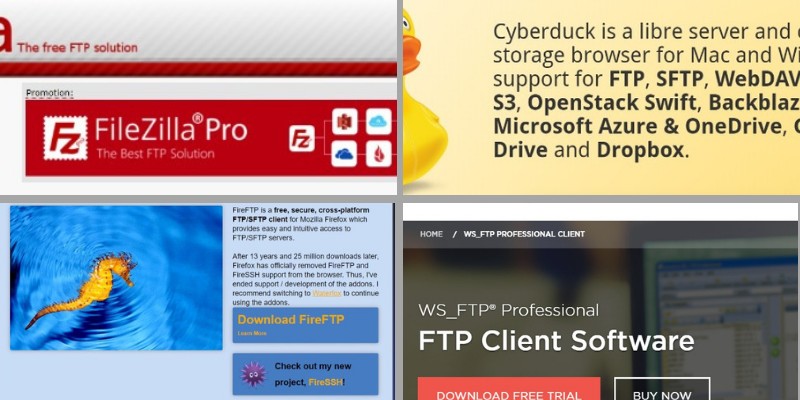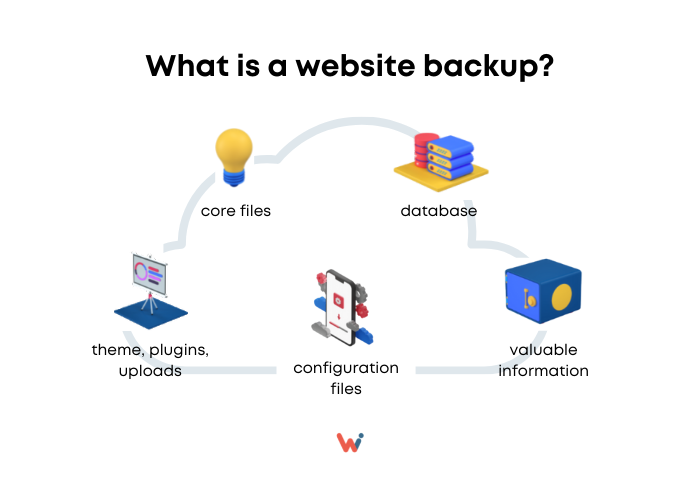
Web servers are used to host websites, web apps and other content on the Internet. There are a number of different types of servers available, and selecting the best one for your needs depends on use case, deployment, operating system, and more. Here are a couple of options you might want to consider.
Local Servers
If you have a small business or need to host a small-scale website, then a local web server may be your best choice. These servers are designed for a specific purpose and provide a convenient and secure way to host your website.
Open Source Web Servers
There are a wide variety of open source web servers to choose from, and each has its advantages and disadvantages. There are a few that stand out from the rest. Apache, Nginx Lighttpd and Caddy are some of the most popular.

Apache is the most common web server used by over half of websites. It is free to install and download, open source and modular, making it easy to add new functions and modify the site's configuration.
Nginx
Nginx Web Server is lightweight and high-performance. It is also fast and reliable. Many businesses use Nginx to serve static or dynamic content. It supports SSL/TLS as well basic HTTP authentication and virtual hosting.
Lighttpd
Lighttpd is a UNIX-based web server that aims to deliver low resource usage, high speed and a compact footprint. This means that it can run on systems with limited memory and storage space without consuming more CPU power than necessary.
LiteSpeed
Another web server to consider is LiteSpeed, which was designed specifically for low-memory environments like home computers and embedded devices. This server was designed to overcome the resource challenges faced by other mainstream webservers. It is also one of the most resource-efficient options if you need a compact server that can handle large volumes of traffic.

Cherokee
It was created as an individual developer's personal project. Although it does not have some of the latest features like Nginx and Lighttpd it is a great option for anyone looking to host a website in a simple, easy-to-manage environment. The user interface is friendly and makes it easy to use for even the most casual of users.
Caddy
Caddy requires no additional scripts or software in order to function. Caddy is an excellent choice for people who don't know how to configure the Apache or Nginx servers.
This server shares the same underlying architecture as Nginx. The only difference is that it uses asynchronous handling of requests, and operates in a single thread. Although it's not quite as scalable Nginx and Lighttpd are, it can handle a few hundred requests a second.
FAQ
What is a UI Designer?
A user interface (UI) designer creates interfaces for software products. They are responsible for designing the layout and visual elements of an application. Graphic designers may also be part of the UI designer.
The UI designer should be able solve problems by understanding how people use computers.
A UI designer should have a passion for technology and software design. He/she must understand all aspects of the field, from developing ideas to implementing those ideas into code.
They should be able use a variety of tools and techniques to create designs. They should be creative thinkers and be able to solve problems using innovative solutions.
They should be detail oriented and organized. They should be able create prototypes quickly and efficiently.
They should feel comfortable working with clients large and small. They should be able and willing to adapt to different situations and environments.
They should be able to communicate effectively with others. They should be able communicate clearly and concisely.
They must be well-rounded and have strong communication skills.
They should be highly motivated and driven.
They should be passionate about what they do.
What is a static website?
A static website contains all content stored on a server that visitors can access via web browsers.
The term "static", refers to the absence or modification of images, video, animations, and so forth.
This type of site was originally developed for use in corporate intranets but has since been adopted by individuals and small businesses who want simple websites without the complexity of custom programming.
Because static websites require less maintenance, they have grown in popularity. They're easier to update and maintain when compared to a fully-featured website with many different components (such as blogs).
They load much faster than dynamic counterparts. They are great for people who use mobile devices and have slow Internet connections.
In addition, static sites are more secure than their dynamic equivalents. Static websites are much harder to hack than dynamic ones. Hackers have limited access to data within a database.
There are two main ways to create a static website:
-
A Content Management System (CMS),
-
How to create a static HTML website
The best one for you will depend on your specific needs. I recommend a CMS if you're just starting to create websites.
Why? Because you have complete control over your website. You don't even need to hire someone for help setting up your CMS. Upload files to the website server.
You can still learn to code and make a static website. However, you will need to put in some time to learn how to program.
What Should I Add to My Portfolio?
These should all be included in your portfolio.
-
You can also see examples of your previous work.
-
Link to your website (if possible).
-
You can also find links to your blog.
-
These links will take you to social media websites.
-
Here are links to portfolios online of other designers.
-
Any awards you've been awarded.
-
References.
-
You can also send us samples of your work.
-
These are links showing you how to communicate effectively with clients.
-
These links show that you are open to learning new technologies.
-
Here are some links to show you are flexible.
-
These links show your personality.
-
Videos showing your skills.
How much do web developers make?
A website is a project you can work on for your own money. You'll likely make $60-$80 an hr. You can charge more if you're an independent contractor. You could potentially charge anywhere from $150-200 per hour.
How to design a site?
Understanding your customers' needs is the first step. What are they looking for when they visit your site?
What problems might they have if they don't find what they're looking for on your site?
After you have this information, you need to find out how to solve the problem. You also need to make sure that everything on your site looks right. It should be simple to navigate and use.
It is important to have a professional-looking website. It shouldn't take too much time for it to load. If it takes too much time, people will not stay as long as they want. They will move on to something else.
If you want to create an eCommerce site, think about where all of your products are located. Are they all in the same place? Are they all in one place?
You must decide whether to sell one product only or many products simultaneously. Do you prefer to sell one type of product, or several types?
Once you have answered these questions, you can begin building your site.
Now, it's time to take care of the technical aspects. How will your site work? Is your site fast enough to be useful? Can they access it quickly via their computers?
Can people buy things without having to pay more? Do they need to register in order to buy anything?
These are the essential questions you should ask yourself. When you have the answers, you can move on.
Statistics
- Is your web design optimized for mobile? Over 50% of internet users browse websites using a mobile device. (wix.com)
- The average website user will read about 20% of the text on any given page, so it's crucial to entice them with an appropriate vibe. (websitebuilderexpert.com)
- At this point, it's important to note that just because a web trend is current, it doesn't mean it's necessarily right for you.48% of people cite design as the most important factor of a website, (websitebuilderexpert.com)
- In fact, according to Color Matters, a signature color can boost brand recognition by 80%. There's a lot of psychology behind people's perception of color, so it's important to understand how it's used with your industry. (websitebuilderexpert.com)
- Studies show that 77% of satisfied customers will recommend your business or service to a friend after having a positive experience. (wix.com)
External Links
How To
Drupal 7 Web Design: How to use it
Drupal is one the most widely used Content Management Systems (CMSs) today. It was created in 2003 by DriesBuijtaert from Belgium. The name of the site is derived by Dirk Buijtewaard's surname and Pierre d'Herbemont's surname. Drupal was released as an open-source CMS in 2005. There have been many versions of Drupal since then. Today, Drupal is used by many websites and companies around the world.
Drupal is very popular with website owners for several reasons. Drupal is free to download, and easy to install. It's easy to customize and extend. It is also very well documented. Fourth, the forum and IRC channels offer great support. Fifth, it can be expanded via modules. Sixth, it supports multiple language versions. It is easy customizable. Eighth, it is scalable. It is safe. Tenth, its reliability is assured. Finally, it is supported by the community. Drupal is a good choice for your next project due to all of these factors.
You may be wondering what makes Drupal different than other CMS systems. It's simple. Drupal is an open-source content administration system. Drupal is completely open-source and freely available for download. Drupal allows you to have full control of your website. You can add and remove pages, change colors, fonts and images, as well as modify videos.
Drupal is the best option if you lack technical skills but want to build a website. Drupal, unlike other CMS, doesn't require you to know programming to build your website. You only need to know how Drupal works. After that, you'll be able customize your website according to what you need.
Drupal's many pre-built themes, and plugins are another benefit. These plugins will allow you to increase the functionality of your website. You can use the Contact Form module, for example, to collect visitor contact information. Also, you can use Google Maps to display maps on your website. Drupal comes with many ready-made templates. These templates will give your website a professional appearance.
Drupal's flexibility is another advantage. Drupal is extremely flexible. You can add new modules to your site or even replace them without worrying about compatibility. You can do it quickly if you want to integrate social media into your website. You can also set RSS feeds up, subscribe to e-mails, and many other things.
Drupal can also be customized. You can add custom fields and forms, manage users, and more. Drupal allows you to create complex layouts.
Drupal is resilient and reliable. It is stable and scalable. Also, it offers excellent security features. Drupal is well worth looking into if you are looking for a web development platform that works.